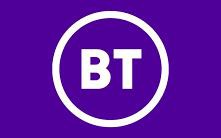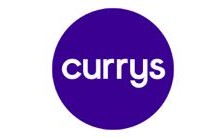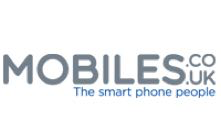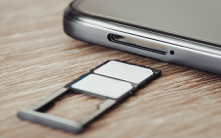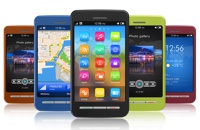 Here we list all of the smartphone / mobile phone deals on Black Friday, including Android and Windows mobile phones, like the Samsung Galaxy, Huawei, Google Pixel, Sony Xperia, Motorola Moto, Nokia, HP Elite, and the Microsoft Lumia.
Here we list all of the smartphone / mobile phone deals on Black Friday, including Android and Windows mobile phones, like the Samsung Galaxy, Huawei, Google Pixel, Sony Xperia, Motorola Moto, Nokia, HP Elite, and the Microsoft Lumia.
If there’s a specific model you’re looking for that you can’t find here, please send us a message through our Facebook page and we’ll hunt out the best deal for you come Black Friday. And, if you’re looking for the all-famous Apple, please head to our dedicated iPhone Deals page, which specifically lists all of the iPhone deals during the famous November sales.
See Also: SIM Only Mobile Deals | Wireless Chargers | Power Banks
Jump To: Samsung Galaxy | iPhone | Huawei | Google Pixel | Sony | Motorola | Microsoft
Shops With Smartphone Offers
Categories
Smartphone Buying Guide

Given the manner in which technology has become integrated into our daily lives, there is perhaps no device as important to us now as our mobile phone. Whether you’re wanting to turn on your heating thanks to an app that’s linked to your smart thermostat or use the in-built map to take you from Land’s End to John O’Groats, your mobile device can help you do it. Here we’ll have a little look at the market leaders and explore the various things that you’ll want to bear in mind when you go mobile phone shopping.
What Is a Smartphone?
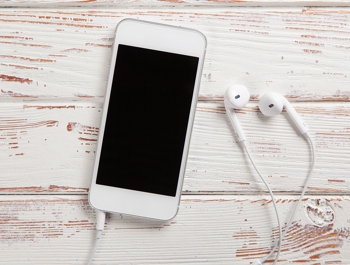 First and foremost, let’s have a quick discussion about what a smartphone actually is. In essence, a smartphone is like a miniature computer, allowing you to do countless things on it that you wouldn’t ordinarily associate with a phone.
First and foremost, let’s have a quick discussion about what a smartphone actually is. In essence, a smartphone is like a miniature computer, allowing you to do countless things on it that you wouldn’t ordinarily associate with a phone.
Typically speaking, phones are used simply to make phone calls. When a keyboard was added to the device they began to be able to send short messages, or SMS (for short message service). The more that technology advanced, the more functionality was added to mobile phones and they were able to store music, photographs and other files.
As anyone who has ever used a modern day phone knows, the best ones are now capable to do the job of several different devices. They have cameras attached to them that are equally as good, if not better, than digital cameras. They can be used to play music from streaming services, like Spotify, just as they can be used to watch films or TV shows on services, such as Amazon Video or Netflix.
The majority of them contain applications that work as maps, allowing you to get directions to wherever you’re trying to go. You can also send email, surf the web and even write and edit documents or spreadsheets.
Why You Might Want a Smartphone
The functionality of smartphones mentioned above covers why you might want to buy a mobile pretty well – they’re all-encompassing devices that allow you to do pretty much anything you want, whenever you’d want to do it.
If you’ve only ever had a phone that can make calls and send messages, then you might wonder what the point in a smartphone is. After all, you’ve coped perfectly well thus far, so why the need to change? The answer is a simple one: convenience.
Given that you can download applications that will let you post on Facebook, scroll through your Twitter feed or even write a novel should you wish to, it’s much easier to pull your mobile out than to power up your PC or Mac, especially if you’re on-the-go!
Operating Systems
By some distance, most mobile phones that are in use nowadays are smartphones. That means that it’s not so much a question of whether or not to get one and more about which one is right for you. The main thing that you’ll need to think about on that front is the operating system (or OS), that your phone of choice runs on. There are three main choices on the market, which are Apple’s iOS, Android and Windows.
Apple iOs
 If you’ve ever used an iPad, MacBook or iPod, then the OS that comes with Apple’s iPhones will feel like second nature to you. It’s a slick, easy-to-use system that has the main benefit of being remarkably intuitive. You get apps via the App Store and are also apple to use Siri, Apple’s personal assistant.
If you’ve ever used an iPad, MacBook or iPod, then the OS that comes with Apple’s iPhones will feel like second nature to you. It’s a slick, easy-to-use system that has the main benefit of being remarkably intuitive. You get apps via the App Store and are also apple to use Siri, Apple’s personal assistant.
For further information on Apple’s iPhone, check out our Apple iPhone Buying Guide.
Android
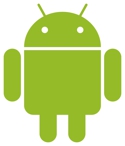 The biggest rival to iOS is Android, which is a Google-based system that’s based on the open-source Linux kernel. That might already sound a little bit too confusing for some of you, but the most important words are ‘open-source’, which dictates that there’s a lot more flexibility in the Android system when compared to its Apple counterpart.
The biggest rival to iOS is Android, which is a Google-based system that’s based on the open-source Linux kernel. That might already sound a little bit too confusing for some of you, but the most important words are ‘open-source’, which dictates that there’s a lot more flexibility in the Android system when compared to its Apple counterpart.
Apple tend to lock their system down tight and third-party apps struggle to get onto iOS, but the same isn’t true of Android. That has pluses and minuses, including the fact that it’s easier to be infected with viruses.
Windows
 The final OS worth mentioning is Windows, which is the system that Windows phones are linked to. If you’ve spent your life locked into using Microsoft’s various packages from Word through to Windows on your PC, then these phones will certainly tempt you.
The final OS worth mentioning is Windows, which is the system that Windows phones are linked to. If you’ve spent your life locked into using Microsoft’s various packages from Word through to Windows on your PC, then these phones will certainly tempt you.
It will strike you as intuitive to begin with, but the likelihood is that, after a while, it will start to cause you irritation because it’s not designed for mobile usage in the same way that the other two operating systems are.
The Different Mobile Phones
Now that you know the various operating systems that the various phones use, as well as the different things you’ll want to think about when buying one, here’s a look at the biggest phone types that are on the market.
Samsung Galaxy
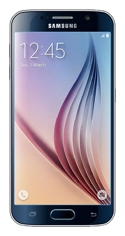 The South Korean conglomerate, which was formed in Seoul, runs on the Android operating system and the Galaxy line is the company’s top-end set of mobile devices. Whereas some mobile phone companies update their line every year without fail (we’re looking at you, Apple), Samsung don’t do it with the same degree of regularity, but when they do release an upgrade then it tends to have been worth the wait.
The South Korean conglomerate, which was formed in Seoul, runs on the Android operating system and the Galaxy line is the company’s top-end set of mobile devices. Whereas some mobile phone companies update their line every year without fail (we’re looking at you, Apple), Samsung don’t do it with the same degree of regularity, but when they do release an upgrade then it tends to have been worth the wait.
At the time of writing, the most recent release is the Galaxy S9, which boasts an impressively quick Snapdragon 845 processor. The phones tend to have some of the best cameras around with the S9 boasting a 12-megapixel one. The phone also has an AMOLED screen that is seriously beautiful to use. The touchscreen is unlocked using a fingerprint sensor, which works at a lightning fast pace.
The phones come in a variety of colours, so you’re not locked in to some boring colour or another. Whether it’s the phone for you will largely come down to how you feel about the Android operating system. On the one hand it gives you a huge amount of freedom regarding what you can do with it, yet on the other it’s also quite bloated with Samsung’s own customised version of it. That can slow down loading times and also limit what apps you’re able to delete. If you like Android, though, then this is the market-leader.
iPhone
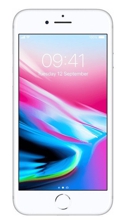 The biggest competitor to the Samsung Galaxy is unquestionably the iPhone. Apple’s flagship device was first released in 2007, but a series of newer versions of it have been released since then. The phone is based around the idea of there being no buttons other than the home button on the front of it, though even that has changed with the latest generation. If you need to make a phone call then a touchscreen pad will appear on the screen. If you want to type a message then a virtual keyboard will appear. It was the phone that revolutionised the industry, which is something that Apple continue to do with every passing year.
The biggest competitor to the Samsung Galaxy is unquestionably the iPhone. Apple’s flagship device was first released in 2007, but a series of newer versions of it have been released since then. The phone is based around the idea of there being no buttons other than the home button on the front of it, though even that has changed with the latest generation. If you need to make a phone call then a touchscreen pad will appear on the screen. If you want to type a message then a virtual keyboard will appear. It was the phone that revolutionised the industry, which is something that Apple continue to do with every passing year.
The majority of Apple phones use a fingerprint scanner to unlock the screen, but the iPhone X changed all of that with the invention of facial recognition software known as Face ID. It’s the most expensive of the Apple devices and one of the most expensive mobile phones that you can buy. If you want to have an Apple phone but don’t want to spend so much money then don’t panic – the company released different models in order to appeal to different budgets. You’ll still be paying a lot of money, but not as much as for the iPhone X.
There are pros and cons to buying an Apple device. There’s no question that iOS is remarkably intuitive and easy-to-use, but you’re locked into the Apple ecosphere and that doesn’t allow much wiggle room in terms of using third-party apps; if they’re not on the App Store then you can’t use them legally. The battery is also a known problem, allowing users to get a solid day of use out of it but not much more than that. How much you like Apple phones will come down to how much you like to be the cool kid and if you like the operating system.
For all the latest Black Friday deals on Apple’s iPhone and further information, check out our iPhone page.
Huawei
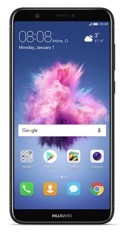 Huawei is arguably the biggest rival to Samsung in terms of the big phones that work on Android OS. The main reason that they’re giving the Korean company a run for its money is that they’re producing high-end phones for those with lower budgets. It’s the world’s largest telecommunications equipment manufacturer, so there are plenty of options when to comes to which one you might want to buy.
Huawei is arguably the biggest rival to Samsung in terms of the big phones that work on Android OS. The main reason that they’re giving the Korean company a run for its money is that they’re producing high-end phones for those with lower budgets. It’s the world’s largest telecommunications equipment manufacturer, so there are plenty of options when to comes to which one you might want to buy.
Depending on the model you opt for, you might find yourself with a phone with curved glass, a long battery life or Gorilla Glass. The Gorilla Glass is designed to prevent the phone from being scratched or damaged, which is definitely a positive. As with Samsung, Huawei add their own software on top of the Android OS to personalise it, but this does bloat the operating system out a little bit. That said, it probably offers the best camera on the market.
Google Pixel
![]() Given that Google is responsible for the Android OS, it’s only right that the company has its own phone. As you’d imagine, it works seamlessly with the operating system and lacks any of the bloating that the likes of Samsung and Huawei add to their phones. The Pixel is possibly the best choice of Android phones as it balances high-end specs with a decent price point that makes it more accessible to most people.
Given that Google is responsible for the Android OS, it’s only right that the company has its own phone. As you’d imagine, it works seamlessly with the operating system and lacks any of the bloating that the likes of Samsung and Huawei add to their phones. The Pixel is possibly the best choice of Android phones as it balances high-end specs with a decent price point that makes it more accessible to most people.
The one disappointment of the Pixel when compared to most Android phones is that there’s no expandable memory slot. In other words, you can’t add a MicroSD card to boost your phone’s memory, which is a bit disappointing for those that like to download lots of music or take a large amount of photos. Decent build-quality and a good battery are the payoffs, as is the fact that the Pixel is available in different sizes.
Sony Xperia
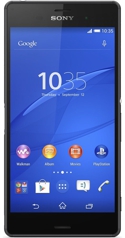 Japanese firm Sony’s flagship phone is the Xperia, first released in 2008 and re-designed a number of times since then. Which generation you look to buy will dictate how impressive the phone actually is, with the most recent versions (at the time of writing) running off a Snapdragon 845 processor. The Xperia X72 Premium, for example, offers a 4K HDR display and dual camera system.
Japanese firm Sony’s flagship phone is the Xperia, first released in 2008 and re-designed a number of times since then. Which generation you look to buy will dictate how impressive the phone actually is, with the most recent versions (at the time of writing) running off a Snapdragon 845 processor. The Xperia X72 Premium, for example, offers a 4K HDR display and dual camera system.
This is another phone that runs on Android, showing how the iPhone really is an oasis in the middle of a desert when it comes to top-level mobiles offering a different OS to the majority. If you like the way the phone works then you’ll be pleased to know that there are different models fore different budgets, meaning that you can choose how much you want to spend.
Motorola Moto
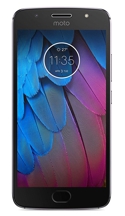 The Moto is Motorola’s flagship smartphone and it’s probably fair to say that it’s helped the get company back on that map. Having been sold to Google in 2012, Motorola’s Moto phones offer an HD screen, cameras on the front and back, an expandable memory slot and, something that’s becoming rarer nowadays, a 3.5mm headphone jack.
The Moto is Motorola’s flagship smartphone and it’s probably fair to say that it’s helped the get company back on that map. Having been sold to Google in 2012, Motorola’s Moto phones offer an HD screen, cameras on the front and back, an expandable memory slot and, something that’s becoming rarer nowadays, a 3.5mm headphone jack.
The phones are waterproof, have a decent battery and come with Android installed as standard. They are more on the ‘value’ end of the smartphone scale, which results in a Snapdragon 630 processor being installed rather than the most powerful ones the others boast. That can end up in the phone seeming a bit sluggish compared to a Samsung Galaxy, for example, but is that a sacrifice worth making for the price point?
Other Smartphones
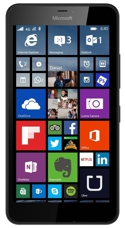 The more observant amongst you will have noticed that we haven’t actually mentioned any Windows phones yet, so it’s only right that we given them a quick shout out. The HP Elite and Alcatel IDOL are two examples of Windows-based phones and they’re well worth considering, along with the Microsoft Lumia pictured in this section.
The more observant amongst you will have noticed that we haven’t actually mentioned any Windows phones yet, so it’s only right that we given them a quick shout out. The HP Elite and Alcatel IDOL are two examples of Windows-based phones and they’re well worth considering, along with the Microsoft Lumia pictured in this section.
There’s also another name that’s missing from the above list – that of Nokia. The Finnish company used to rule the world of mobile phones, but when smartphones came along, they struggled to keep up. They’ve worked hard to adapt to the market though, and the latest generation are starting to fight for a big slice of the Android market.


